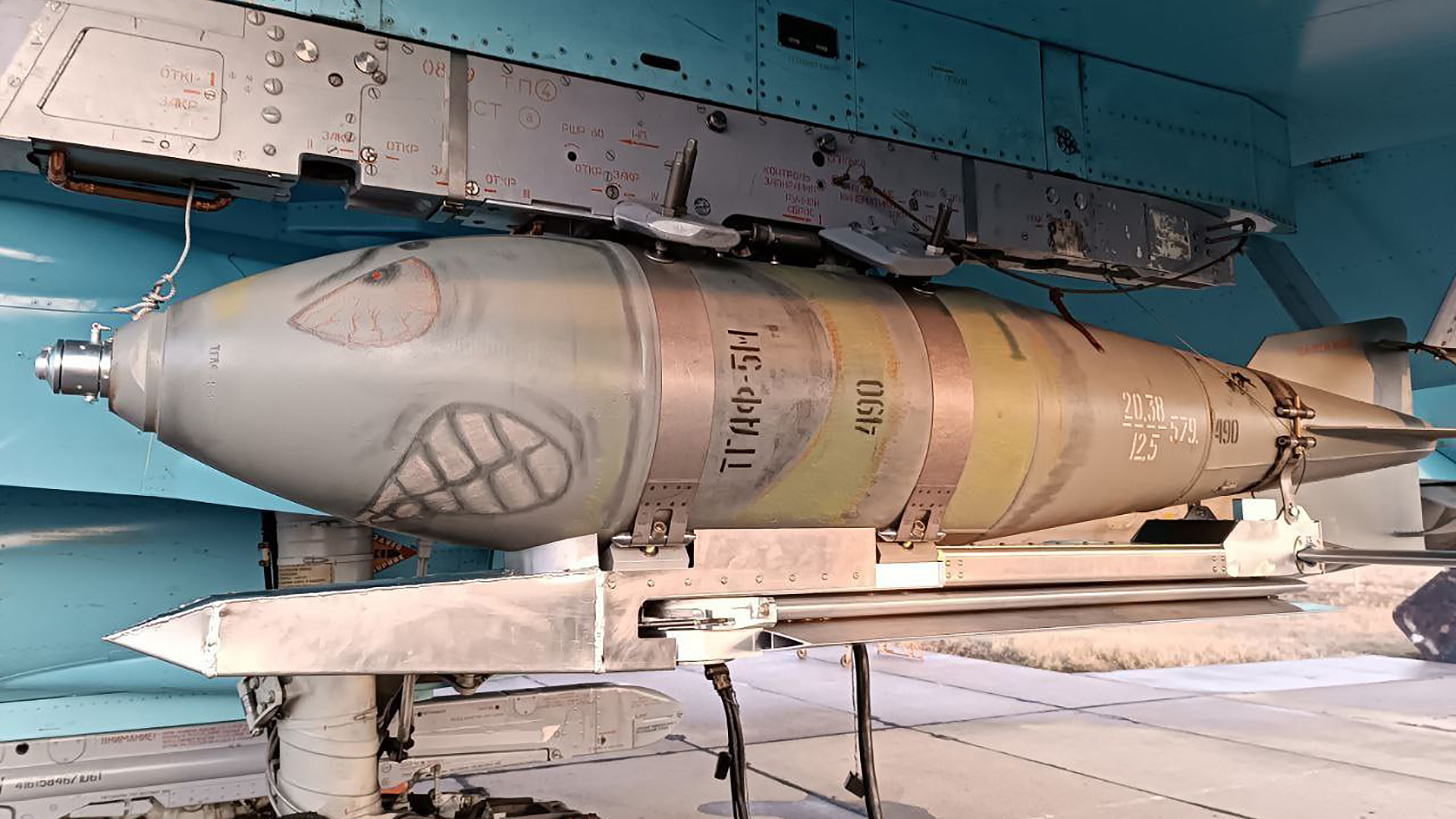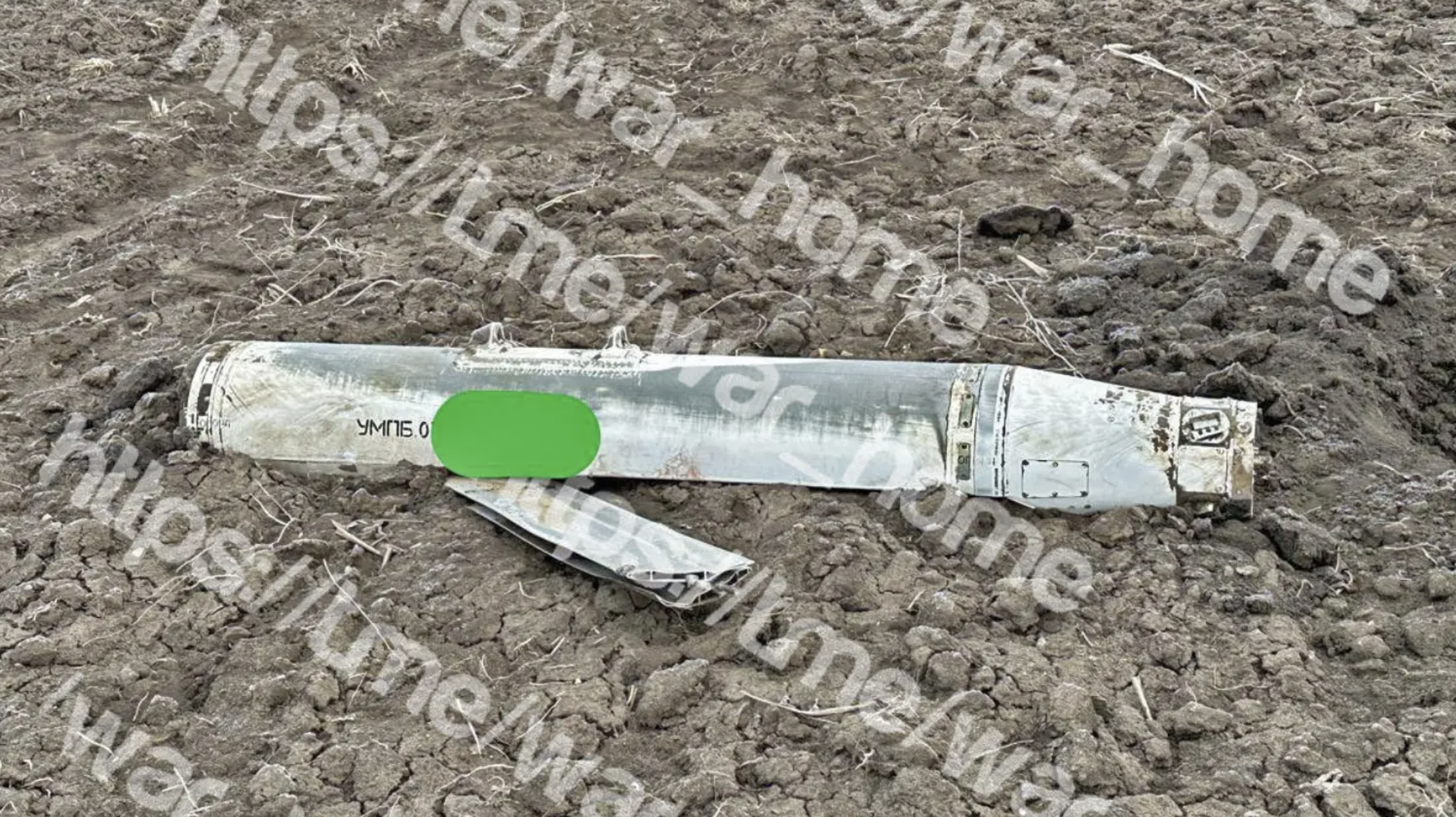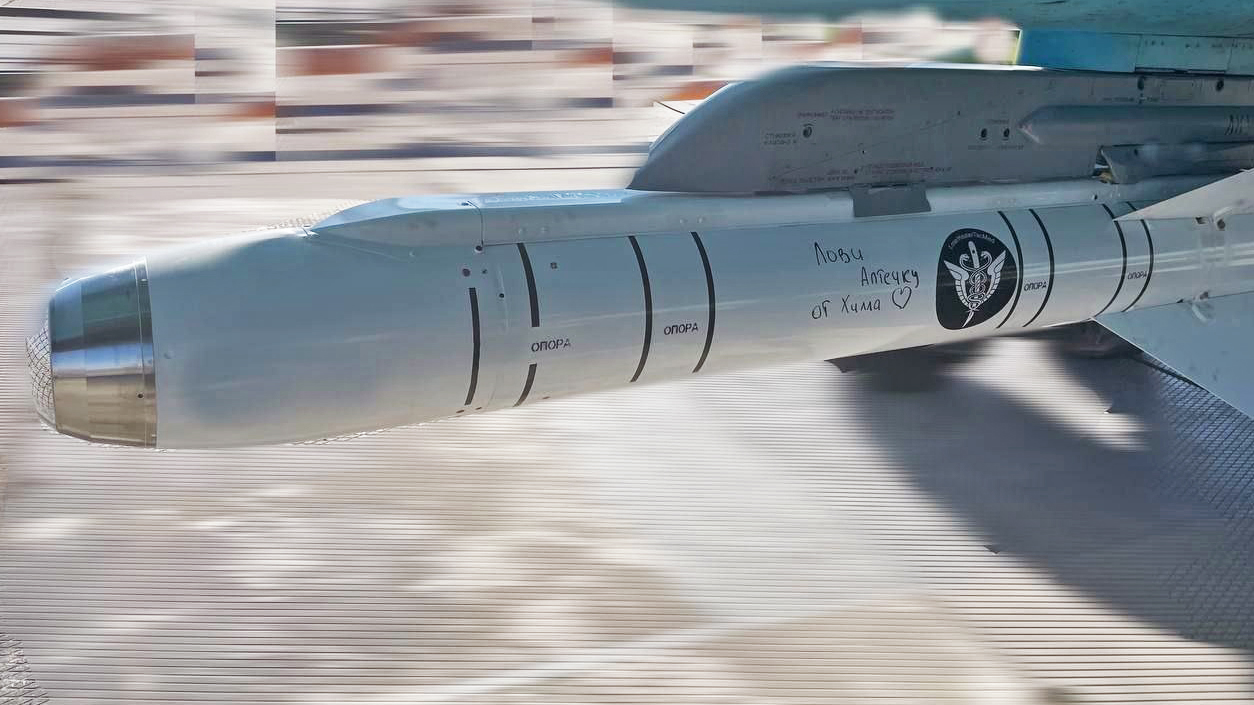A spate of recent imagery shows Russia’s modern Kh-38M air-to-ground missile, apparently employed in the war in Ukraine. Previously, various videos had been released showing airstrikes that purportedly involved Kh-38Ms, but couldn’t be confirmed as such. The new photos show, in some detail, the missile carried under the wing of Su-34 Fullback strike fighters, seemingly taking part in combat sorties.
The use of the new-generation precision-guided munition is notable, with Russian tactical jets so far having relied heavily on fairly improvised glide bombs to give them the standoff capability that they so badly need.
A recent series of photos posted on the Telegram messaging app by accounts connected with the Russian Armed Forces show Kh-38M air-to-ground missiles carried on pylons under the wings and engine intakes of Russian Aerospace Forces (VKS) Su-34s.


Three of these missiles have Cyrillic text handwritten on them, consistent with similar morale-boosting slogans we have seen on other Russian (and Ukrainian) air-launched weapons. One also carries a sticker associated with the Telegram account that posted it.
The circumstances of these images being published, and the markings and stickers on the missiles are consistent with them being photographed during the war in Ukraine.
There have been earlier Russian videos showing what are claimed to be engagements of ground targets using Kh-38M missiles, although none of them revealed detailed aspects of the missiles themselves.
In September 2023, for example, cockpit footage was released showing a Su-34 launching a laser-guided Kh-38ML variant, together with a drone video showing the — apparently — subsequent destruction of a crossing over the Oskil River. It remains possible, of course, that videos from two different incidents were combined.
Only last week, the destruction of a bridge in the eastern Donetsk region was also attributed to the Kh-38M, although the weapons used in both incidents remain unconfirmed.
Various other drone videos have emerged that claim to show strikes of ground targets by Kh-38Ms in the conflict. In these instances, it’s generally claimed that the target designation for the missile was provided by an Orlan-series drone in the vicinity. However, it’s impossible to say for certain whether such videos really do involve Kh-38M launches or other kinds of weapons entirely.
As far as is known, the version of the missile being employed by the VKS in Ukraine is the Kh-38ML, which uses semi-active laser guidance and features a characteristic laser seeker head, as seen in the photo at the top of this story.

This variant requires the target to be lased, either via a designator on the launching aircraft, by a separate platform, or by forces on the ground; these also have to be relatively close to the target (within line-of-sight) during the delivery. Using an Orlan or similar drone for targeting would allow the Su-34 (or other launch aircraft) to turn away after firing the missile, providing the crew with another degree of protection from air defenses that may be defending the target.
The laser seeker also allows the munition to hit moving targets, not just static ones, although this is something we haven’t seen in the videos so far.
The Kh-38M was developed to replace the Soviet-era Kh-25M and Kh-29 air-to-ground missiles, examples of which have scarcely been seen used by the KVS in Ukraine. The likely reasons for this may include a general lack of such weapons, compounded by their age, meaning existing stocks are time-expired.
The new missile was designed to be a “universal” type, meaning the modular missile can accept various different seeker heads. As well as the aforementioned semi-active laser seeker, other options include an imaging infrared seeker (Kh-38MT), and an active radar seeker (Kh-38MA). There is also an anti-armor version with a cluster warhead (Kh-38MK) that drops submunitions that individually self-home onto tanks or other vehicles. There is so far no confirmation that any of these other versions are being used, but it remains a possibility.

All versions of the missile are powered by a solid-fuel rocket motor and have an inertial navigation system with satellite navigation inputs. Normally, a high-explosive/fragmentation warhead weighing around 550 pounds is fitted.
As for the Kh-38ML, the first launches were made from a Su-34 in 2010. The missile reportedly completed state tests in early 2015 but has been only rarely seen since then.
It’s worth noting that the Kh-38M also served as the basis for another new-generation weapon, the Grom (meaning thunder in Russian). This weapon is available in powered and unpowered form and has an elongated body with long folding wings that pop out, for additional range. As far as is known, the Grom uses inertial/satellite navigation, meaning it can only be employed against fixed targets.
As TWZ reported in the past, there is evidence of the Grom being used in Ukraine, but apparently only on a very limited scale, perhaps suggestive of combat trials.

Apparent wreckage of a Grom glide bomb in Ukraine:
On the other hand, based on imagery purported to show the Kh-38M in action, as well as examples loaded on Su-34s, the VKS appears to be employing this missile much more frequently.
With a range of 25 miles, the Kh-38ML should provide the VKS with a very useful capability, offering the standoff range that it has sought in the war in Ukraine.
Even before Kyiv began to receive advanced Western ground-based air defense systems, Ukraine’s air defenses were extracting a very heavy toll on Russian air power. At the start of the war, VKS tactical jets like the Su-34 were mainly restricted to using freefall ‘dumb’ weapons that required the aircraft to pass directly over the target, or at least very close to it, leaving them vulnerable to air defenses.
Russia’s urgent need for standoff weapons, which allow aircraft to launch indirect attacks on targets that would otherwise expose them to unacceptable risk, led to the introduction of rapidly fielded precision-guided glide bombs. The UMPK, or Unifitsirovannyi Modul Planirovaniya i Korrektsii, meaning unified gliding and correction module, simply adds a wing and guidance kit to any of several types of freefall bombs. Despite their limitations, these weapons have become a major concern for Ukraine.

More recently, an improved version of the Russian precision-guided glide bomb, known as the UMPB has appeared. This builds on experience with the earlier UMPK and is rumored to be suitable for launch from both aircraft and ground-based rocket artillery. There are also suggestions it may be compatible with a motor, for even greater range.

While we don’t know exactly what kinds of distances the UMPK and UMPB can reach, the first of these is said to have a range “much smaller” than the widely reported (but unofficial) 44 miles, which would have put it in a similar class to the U.S.-made JDAM-ER.
With a maximum range of 25 miles, the Kh-38ML might not offer a huge improvement in terms of striking distance, if at all, but it has other obvious benefits.
As a purpose-designed powered munition, the Kh-38ML’s aerodynamic characteristics are much better than these more ad-hoc solutions. There have been various mishaps involving UMPKs, including incidents in which these fell on Russian territory. Overall, their failure rate appears to be high and their accuracy is questionable.

The Kh-38ML, with its laser guidance, should offer much-improved accuracy as well as the ability to hit moving targets.
The new missile also provides Russia with a significant capability for rapid-response precision strikes. In the past, Iskander-M short-range ballistic missiles have frequently been used to prosecute high-value, time-sensitive targets, for which a missile in the class of the Kh-38M would be a better fit. With targeting provided by an Orlan drone, the Kh-38M offers an ideal way of striking targets of this kind, something that is likely impossible with glide bombs, which are understood to require targeting data to be uploaded prior to takeoff. In this regard, the Kh-38M can help fill a glaring gap in the Russian armory, which currently offers limited options for striking time-sensitive targets much beyond the front lines, especially moving ones.
Overall, the flurry of Kh-38ML imagery at this stage points to Russia’s continuing efforts to introduce (more effective) air-launched weapons with standoff range. This has likely been driven by recent spikes in losses of tactical aircraft — according to Ukrainian sources, at least.
Already, the fairly primitive UMPK has proven to be a considerable headache for Ukrainian air defense operators and the Kh-38ML will only compound their problems, provided it’s fielded in meaningful numbers.
This latter point may reveal the major drawback of the Kh-38ML, namely the ability of Russia’s industry to produce it in the quantities needed. Hampered by crippling international sanctions, Russia’s ability to manufacture high-technology weapons without access to Western components has been repeatedly questioned.
A new offensive in the Kharkiv region means that Russian aircraft will likely be operating more frequently in close proximity to Ukrainian ground-based air defenses. As such, weapons offering standoff range, like the Kh-38ML, are only likely to become more important to the Russian Aerospace Forces and will provide Ukraine with further difficulties as it seeks to counter them.
Contact the author: thomas@thewarzone.com
